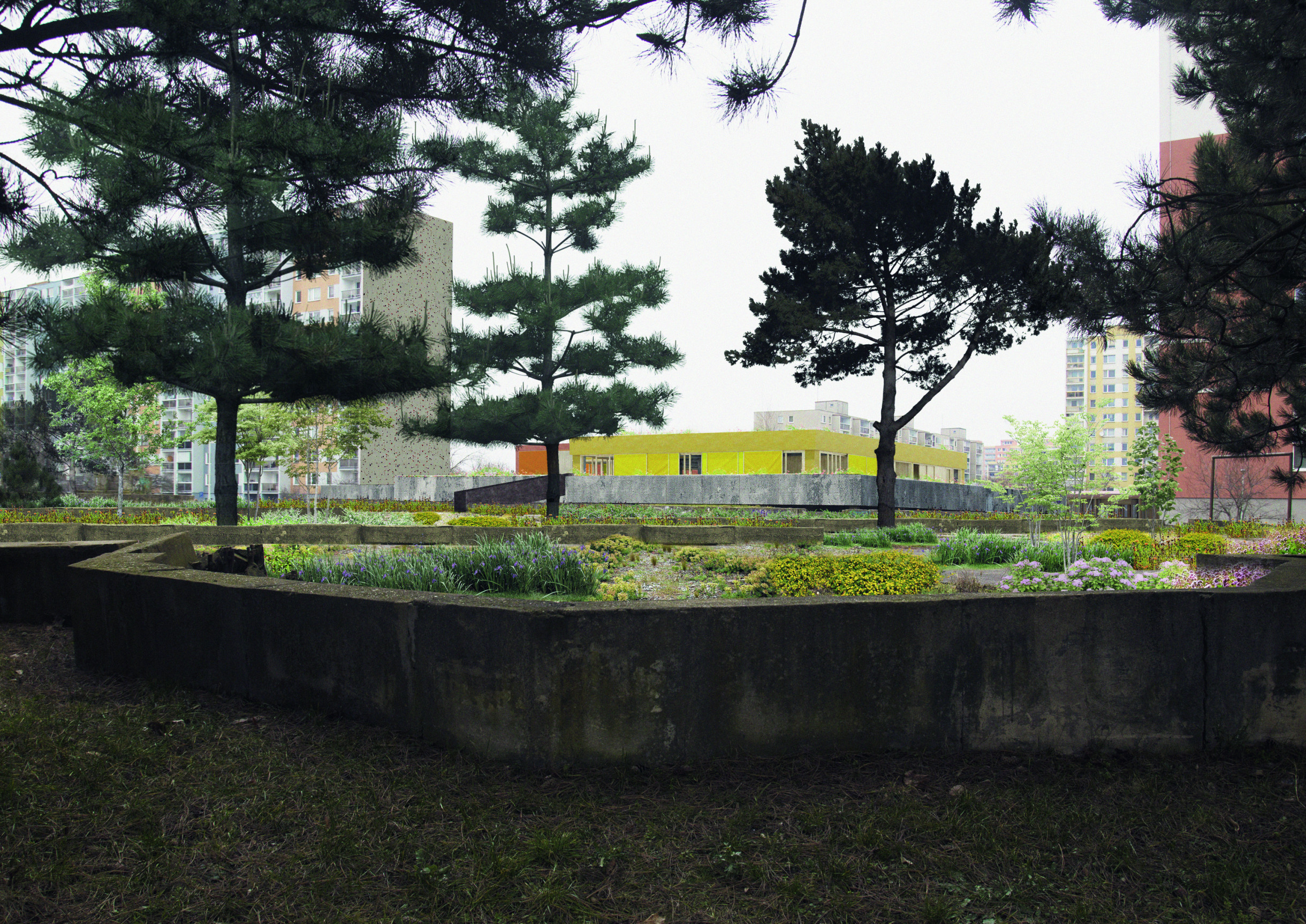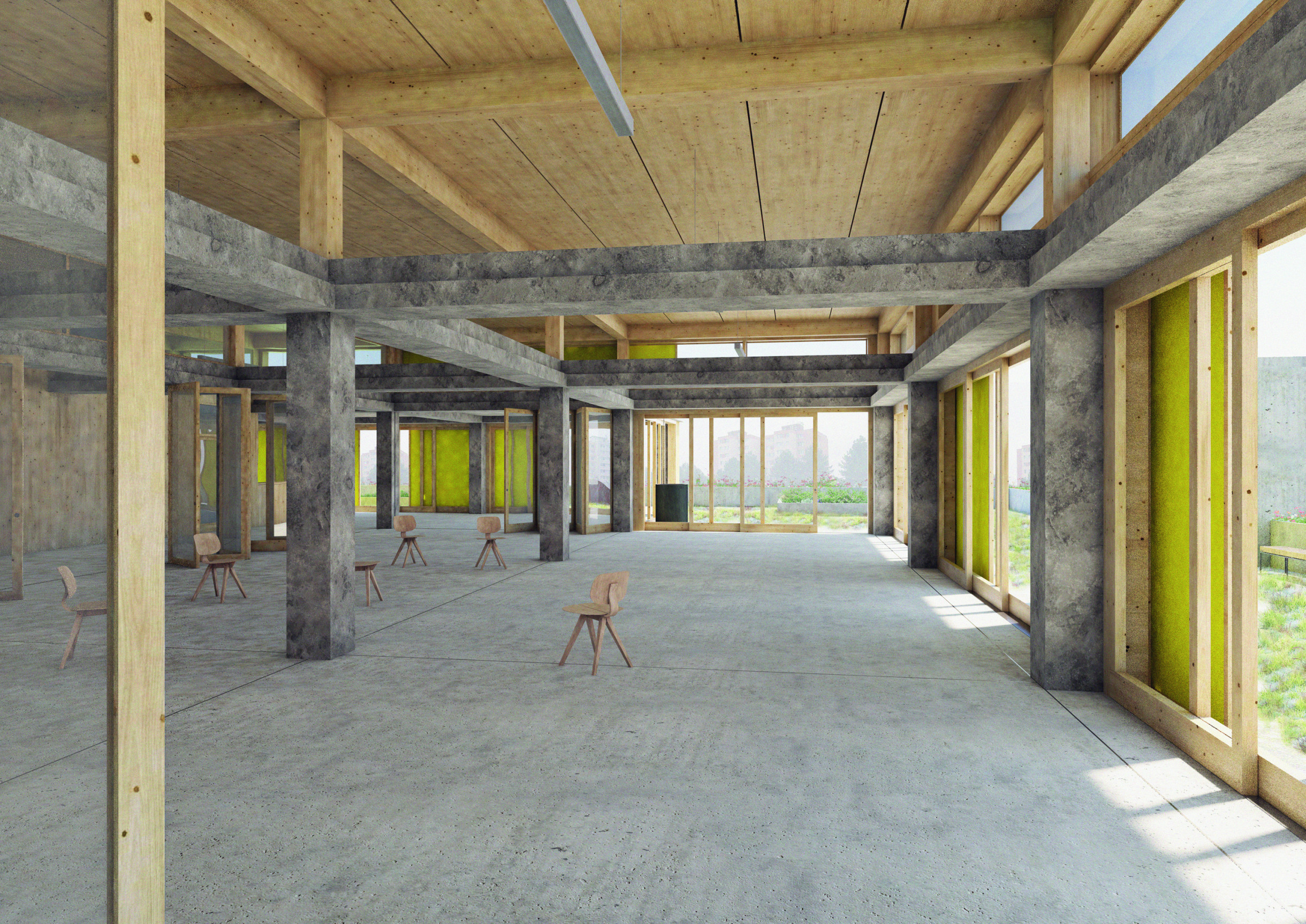Klára Vejvodová↓
Gallery
Studies
| 2018–2021 | Architecture, AVU (Miroslav Šik) |
| 2009–2014 | FA VUT v Brně |
About the work
Město sídliště a práce
In her diploma project entitled Město sídliště a práce (The city of the estate and work), Klára Vejvodová focuses on one of the aspects of the shared interest of the School of Architecture students – the phenomenon of Czechoslovak modernist housing estates. Their diploma projects propose a series of interventions for the housing estate in Bohnice, Prague. Vejvodová‘s project deals with an issue that, to a great extent, remains unresolved in the locations of the largest housing developments in the country. Built quickly and efficiently, the housing estates were intended to find a solution to the critical shortage of housing characterising the era prior to the Velvet Revolution. They, however, did not include any non-residential buildings designed for other activities as is the case in the current urban environment. In certain aspects, the housing estates were an extraordinary “tool” for the emancipation of young families of that particular era. On the other hand, they were being abandoned by their inhabitants during the day, especially during working hours, because of commuting to work and, at other times, for cultural activities and entertainment. The present-day housing estates are attractive environments offering their occupants a green space for living, large, open areas and tranquillity not easily found in the traditional urban developments. At the same time, however, they remain enclosed “within the walls” of monofunctional space.
In her project, Klára Vejvodová decided to concentrate on the location of the former Nisa shopping centre, one of four similar buildings constructed at the Bohnice housing estate. She investigates whether a low, horizontally oriented building surrounded by the verticals of concrete high-rise blocks, a place with a peculiar charm, must patiently wait for its demise to surrender its prestigious position, initially reserved for it, to a new private development project. She examines whether a complete destruction of such buildings at the existing housing estates does not further reinforce denial of the past, and whether the current development of these locations is not as monofunctional or hasty as the earlier construction.
Seeking a possible answer to the question of how the unused buildings or the communist era could be dealt with, she also considers the expectations of space “between” housing in her project. She explores the current perception of the concept of working day, its limits and the associated demand for a change in the understanding of the notion of workplace. This is especially important under the current circumstances when working from home is becoming more commonplace, raising questions about how housing estates which were not intended for work could accommodate the newly emerging needs.

